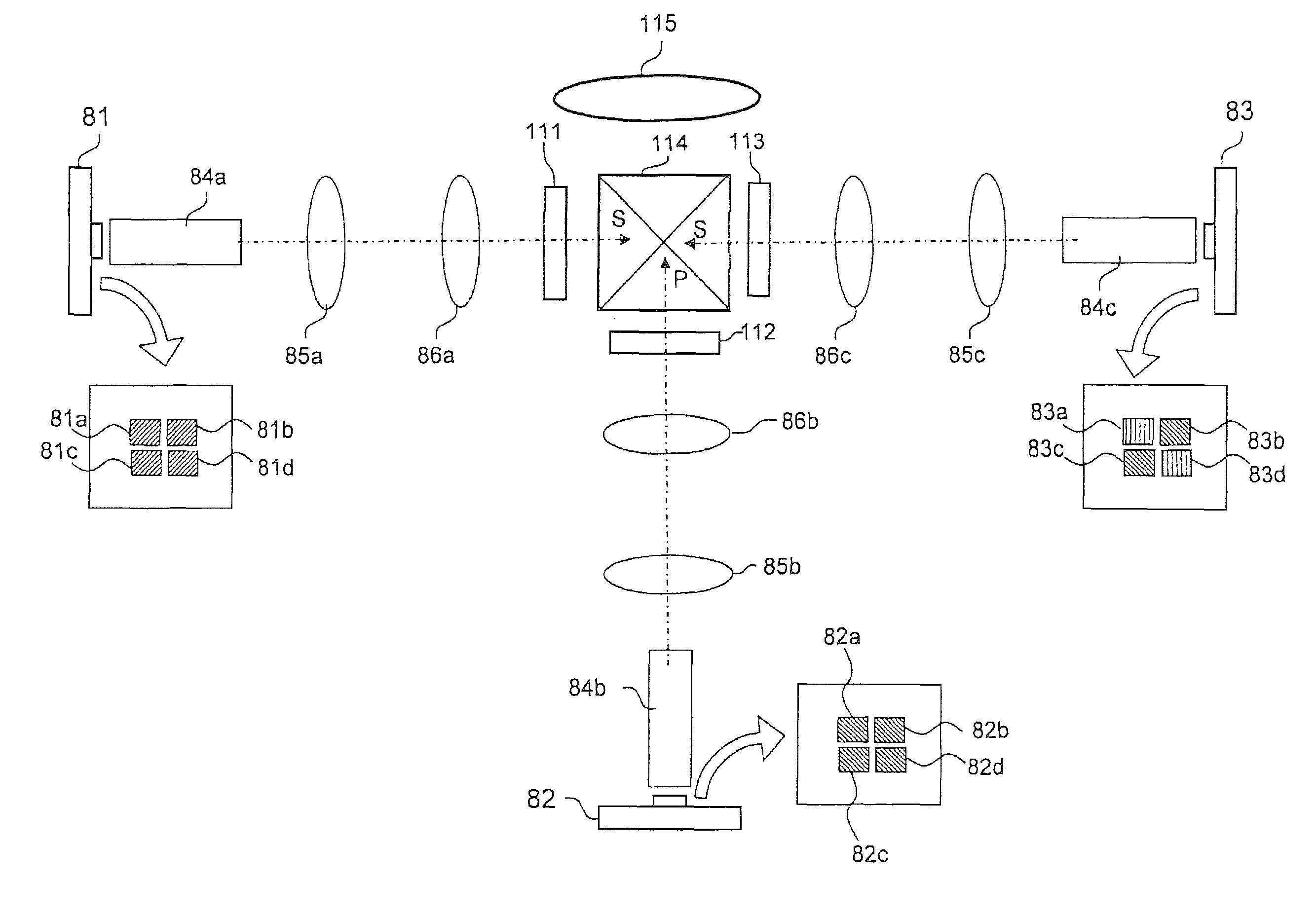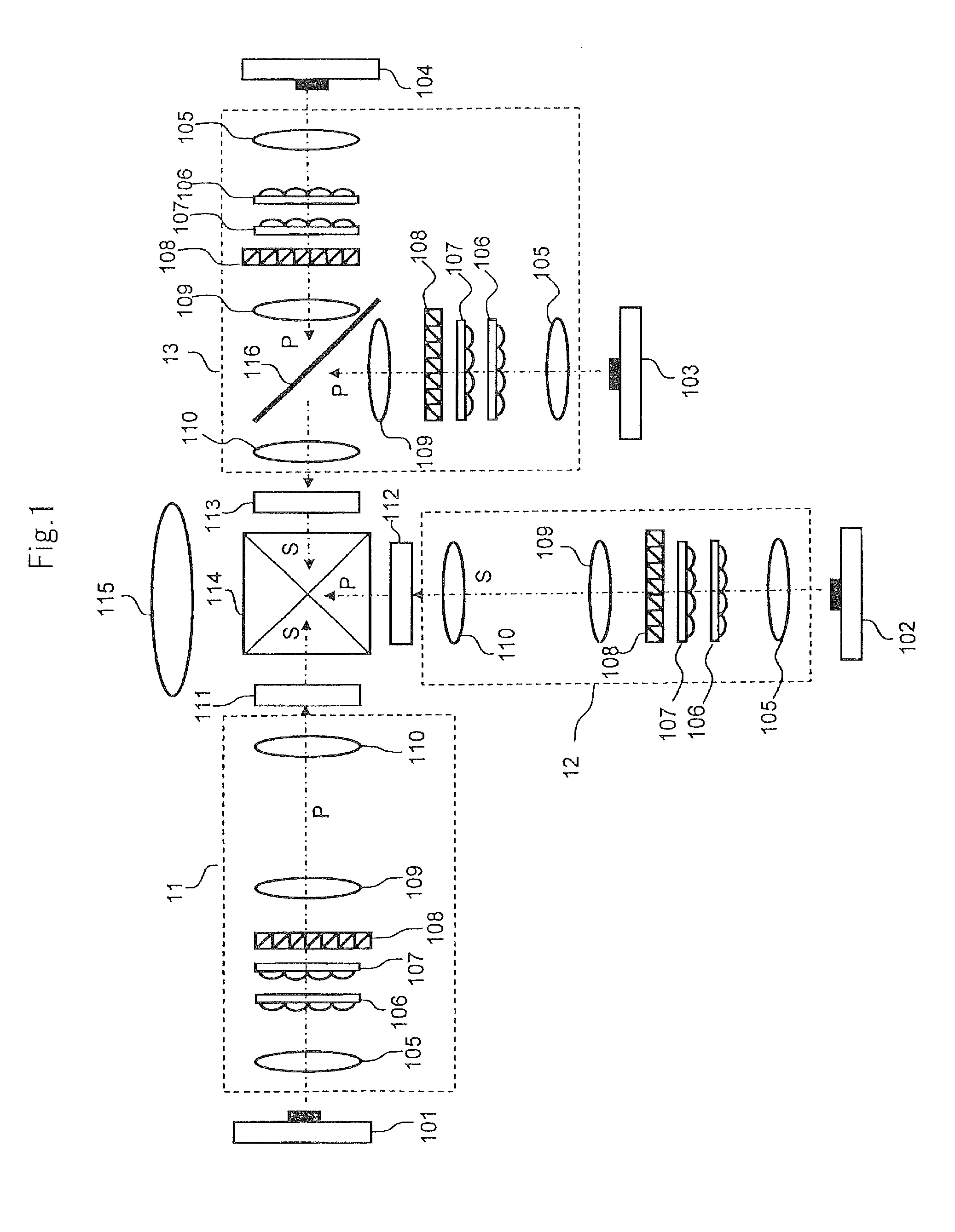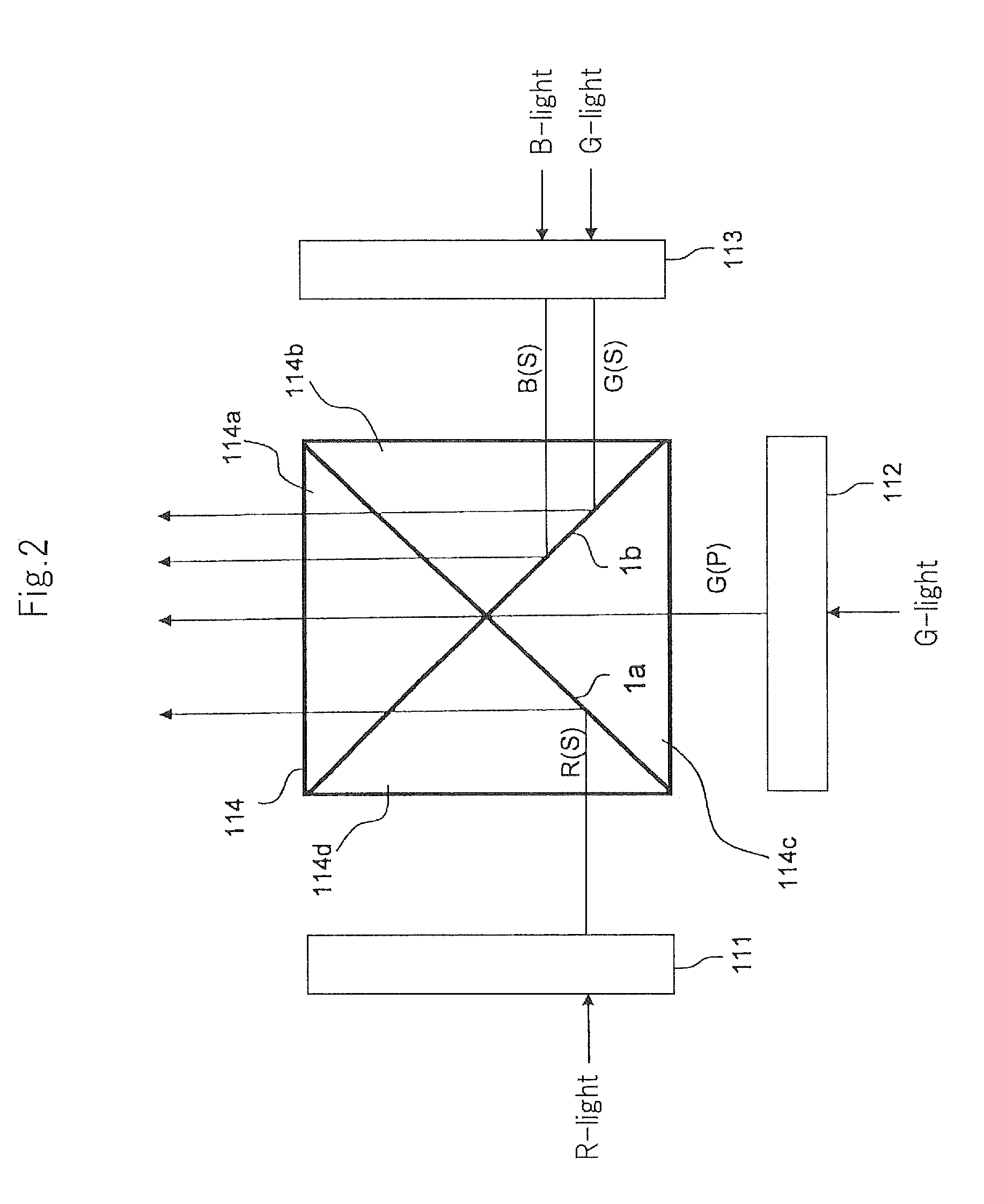Projector and image display method
a projector and image display technology, applied in the field of projectors, can solve the problems of reducing color reproducibility, reducing color reproducibility, and inability to acquire sufficient transmittance (or reflectance) for light having a wavelength in the neighborhood of the cutoff, so as to and reduce the amount of light emitted from the dichroic mirror
- Summary
- Abstract
- Description
- Claims
- Application Information
AI Technical Summary
Benefits of technology
Problems solved by technology
Method used
Image
Examples
first embodiment
[0079](First Embodiment)
[0080]FIG. 1 is a schematic diagram showing the configuration of a projector according to the first embodiment of the present invention.
[0081]Referring to FIG. 1, the projector according to this embodiment includes red light source 101, green light sources 102 and 103, blue light source 104, lighting optical systems 11 to 13, liquid crystal panels 111 to 113, cross dichroic prism 114, and projection lens 115.
[0082]Red light source 101 that is a solid light source having a peak wavelength in a red wavelength band includes, for example, a LED or a semiconductor laser for emitting red light. Blue light source 104 that is a solid light source having a peak wavelength in a blue wavelength band includes, for example, a LED or a semiconductor laser for emitting blue light.
[0083]Each of green light sources 102 and 103 that is a solid light source having a peak wavelength in a green wavelength band includes, for example, a LED or a semiconductor laser for emitting gre...
second embodiment
[0170](Second Embodiment)
[0171]FIG. 8 is a schematic diagram showing the configuration of a projector according to the second embodiment of the present invention.
[0172]The projector according to this embodiment includes red light source 101, green light sources 102 and 103, blue light source 104, lighting optical systems 71 to 73, liquid crystal panels 111 to 113, cross dichroic prism 114, and projection lens 115.
[0173]Red light source 101, green light source 102, blue light source 104, liquid crystal panels 111 to 113, cross dichroic prism 114, and projection lens 115 are similar to those of the first embodiment.
[0174]Green light source 103, which is similar to that of the first embodiment, is used as a light source for liquid crystal panel 111.
[0175]A red optical beam emitted from red light source 101 and a green optical beam emitted from green light source 103 enter into lighting optical system 71 from different directions.
[0176]Lighting optical system 71 includes a first optical...
third embodiment
[0207](Third Embodiment)
[0208]FIG. 12 is a schematic diagram showing the configuration of a projector according to the third embodiment of the present invention.
[0209]The projector according to this embodiment includes light sources 81 to 83, optical guiding units 84a to 84c, illumination lenses 85a to 85c and 86a to 86c, liquid crystal panels 111 to 113, cross dichroic prism 114, and projection lens 115.
[0210]Liquid crystal panels 111 to 113, cross dichroic prism 114, and projection lens 115 are similar to those of the first embodiment.
[0211]Light sources 81 to 83 are multichip type solid light sources each including a plurality of semiconductor chips. As the multichip type solid light sources, there are a LED and a semiconductor laser.
[0212]Light source 81 includes four chips 81a to 81d. Chips 81a to 81d, which can be individually controlled, output red light (P-polarized light). The area of the entire emission surface (rectangular region shown in FIG. 12) of chips 81a to 81d is a...
PUM
 Login to View More
Login to View More Abstract
Description
Claims
Application Information
 Login to View More
Login to View More - R&D
- Intellectual Property
- Life Sciences
- Materials
- Tech Scout
- Unparalleled Data Quality
- Higher Quality Content
- 60% Fewer Hallucinations
Browse by: Latest US Patents, China's latest patents, Technical Efficacy Thesaurus, Application Domain, Technology Topic, Popular Technical Reports.
© 2025 PatSnap. All rights reserved.Legal|Privacy policy|Modern Slavery Act Transparency Statement|Sitemap|About US| Contact US: help@patsnap.com



